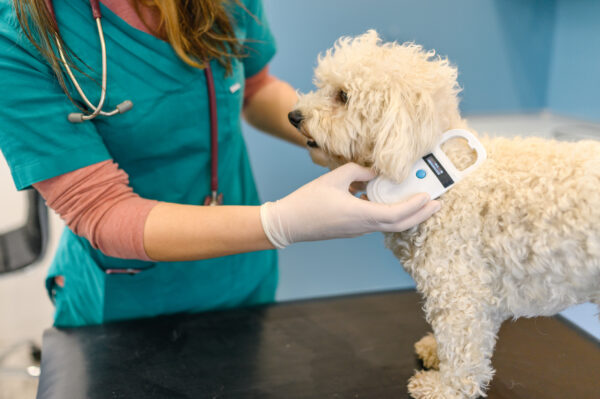Arthritis is a significant problem in middle-aged and older cats and dogs, (which is why supplements such as YuMOVE and Seraquin are a good preventative method), although it can occur in animals of any age. In this blog, our resident vet talks us through joint supplements, their active ingredients and how they can help protect and improve your pet’s joint health.
Osteoarthritis in pets
The most common form of joint disease in dogs and cats is osteoarthritis (OA), characterised by the degeneration of cartilage and the formation of new bone at the joint margins. Most cases of OA in animals occur in association with some predisposing joint disease or injury within the joint that produces areas of increased stress, which eventually result in cartilage erosion and exposure of the underlying bone.
Clinically, most dogs and cats with OA ultimately present with stiffness or lameness, although structural damage may exist for some time before signs are apparent. Lameness is due to a combination of joint pain and restricted movement of the joint, and can be gradual in symptoms or may present acutely following minor trauma or excessive exercise.
The good news is there are joint supplements designed for cats and dogs, and these can prevent the onset of joint diseases while helping your pet feel more comfortable.
How do glucosamine and chondroitin in joint supplements work?
Glucosamine provides the building block of cartilage. Studies have shown that glucosamine such as that in YuMOVE helps to rehabilitate cartilage and reduce the progress of dog and cat arthritis while reducing the pain and increasing their mobility. The glucosamine is rapidly taken up by the cartilage cells and helps stimulate the synthesis of joint fluid and cartilage.
Glucosamine is very safe as it has no known side effects. Chondroitin is also one of the products necessary for the production of cartilage. Chondroitin is sourced from sharks and is the major glycosaminoglycan found in cartilage. It also slows down enzymes that are destructive to the animal’s joints.
Chondroitin is added with glucosamine in products such as Seraquin because it tends to enhance the ability of both substances to repair cartilage, and they work better together than either ingredient alone.
How long does it take glucosamine to work?
Studies show that a minimum period of 4-8 weeks of continuous use of glucosamine is required to achieve maximum effects. Maintenance supplementation is required for long-term health benefits.
How long should my pet take a joint supplement?
Most cats and dogs need to be on replacement therapy for the rest of their lives. Studies have shown that cartilage degeneration will reoccur about four to six months after the product is discontinued. The exception to this would be young animals that were on it for 3 months or so following joint surgery or injury. Once the product has provided support for 6-8 weeks, the dose can often be reduced.
Do joint supplements have known side effects?
Glucosamine and chondroitin are naturally sourced and rarely show any side effects. Occasionally, an animal will vomit or get diarrhoea if started on high doses, however, this can be alleviated if the dose is reduced or given with food. The safety of joint supplements makes them well-suited for long-term use.
Can I give my pet joint supplements along with painkillers?
You should always seek advice from your veterinarian prior to administering any combination of supplements and medication. In some cases, your vet may recommend giving both a joint supplement and an anti-inflammatory pain reliever.
Can glucosamine and chondroitin be used in cats?
Supplements containing glucosamine and chondroitin are often used in cats and appear to work very well in supporting their joint health, such as Seraquin for cats and small dogs, Synoquin EFA for cats and YuMOVE for cats.
How are cat and dog joint products different from human joint supplements?
Joint supplements for cats and dogs contain ascorbic acid to help in the uptake of the ingredients by the body. In addition, animal joint products are dosed in the correct size for them and are often flavoured to make them more palatable. They also come in granules, with MSM, that can be mixed with the food. You should never give human supplements to pets as they are the incorrect dosage and strength for them. Always consult with your vet for advice if unsure.
What is the difference between glucosamine (HCl) and glucosamine sulphate?
Glucosamine hydrochloride (HCl) and glucosamine sulfate both work equally well in cats and dogs. The sulfate form was originally used in Europe. The HCl form has recently become more popular because it is purer, and provides more available glucosamine per unit weight and contains much less residual ash.
What are green-lipped mussels?
Pernacanaliculi, or green-lipped mussel, is an edible shellfish found off the shores of New Zealand. The soft tissue is separated from the shell, washed several times, frozen, and freeze-dried. It is then processed into a fine powder and added to joint supplement products. It contains glucosamine, glycosaminoglycans (which are also building blocks of cartilage), and a type of omega-3 fatty acid. YuMOVE contains four times more Omega 3 than standard.
What is creatine, and is it beneficial for pets suffering from joint disease?
Creatine is modified by the body to serve as a storage reservoir for quick energy. It builds lean body mass by helping the muscle work longer, as it is the increase in exercise that results in building muscle, not creatine alone. When combined with exercise, it may be helpful in pets that are losing muscle.
What is MSM, and how is it useful?
MSM (Methylsulfonylmethane) is a natural, organic source of bioavailable sulphur, an essential element found in cats’ and dogs’ bodies and needed every day for healthy joints and tissues. Processing techniques in the food industry and other factors may reduce the availability of sulphur required for healthy connective tissue, and this may be reflected in joint and skin problems.
Sulphur is the fourth most abundant mineral in the body after calcium, phosphorus and potassium. It is an essential mineral to support connective tissue integrity, including skin and cartilage. Sulphur is also an important component of an intracellular antioxidant, such as glutathione, and is needed to support the transformation of toxic complexes during liver detoxification. It can be found in products such as Arthri Aid Tablets.
What is manganese?
Manganese is a trace mineral needed for healthy bones. The body uses manganese to help manufacture enzymes necessary for the growth, repair and development of cartilage tissue. Manganese also acts as an antioxidant and a crucial component of Super Oxide Dismutase (SOD), an intracellular antioxidant that helps reduce free radical damage.
What is Vitamin C used for?
Vitamin C is an important nutrient needed to maintain connective tissue and collagen, the major component of blood vessels, skin, tendons, joint cartilage and teeth. Ester-C, a special advanced form of Vitamin C, is absorbed twice as fast and retained in the body twice as long, compared with ordinary Vitamin C (Ascorbic Acid), making it the best choice of Vitamin C. It is also a powerful antioxidant that helps protect cells from free radical damage, which is linked to osteoarthritis and other chronic disease states where considerable free radical damage results from long-term inflammation. It is therefore important to support the body with antioxidants during long-term inflammation.



